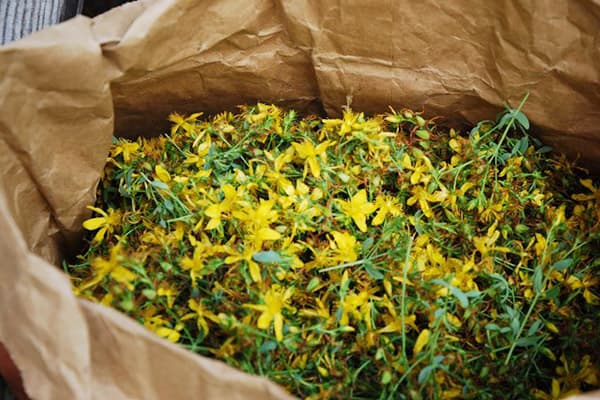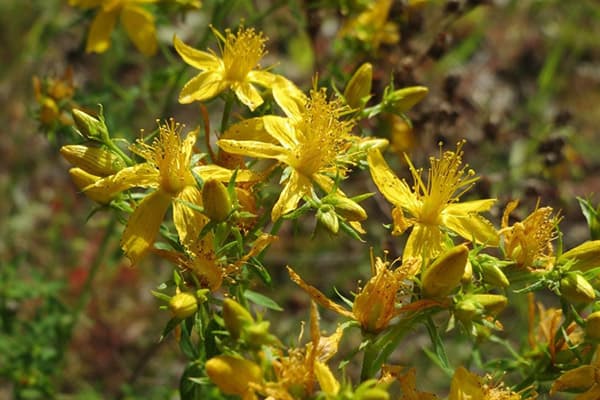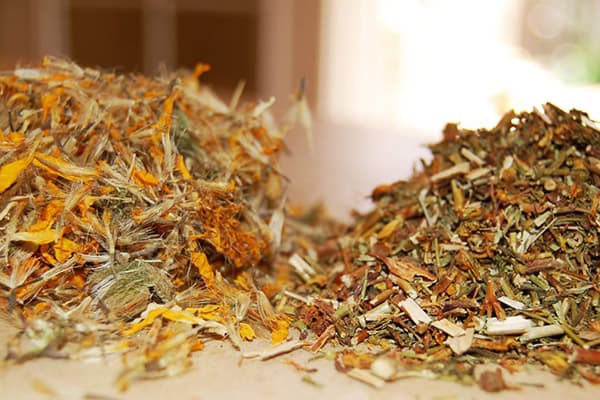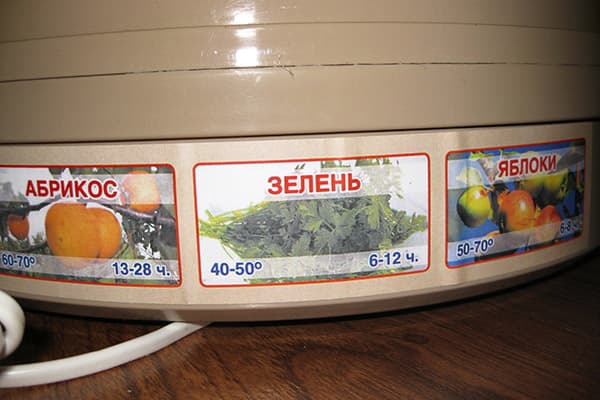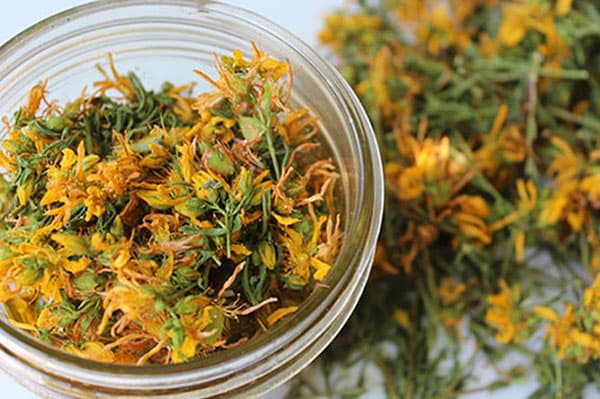How can and how not to dry St. John's wort?
Content:
St. John's wort grass has a lot of useful properties and is useful for treating a variety of diseases. Many people prefer to dry St. John's wort on their own. Properly prepared, it has an incredible healing power. Broth treat wounds and abrasions, burns, boils, abscesses. Not for nothing that in translation from Kazakh “Jerobo” means “healer of wounds”. Using rinses, you can cure inflammatory diseases of the nasopharynx and oral cavity: tonsillitis, stomatitis, sinusitis and others. And inside, a blood-red drink is taken to enhance immunity, with diseases of the gall bladder, liver, intestines, stomach.
How to harvest St. John's wort?
In order for the plants to have medicinal strength, it is not enough just to cut them off, somehow dry and brew. It is important to choose the right time and place to gather. Only the upper part is taken from St. John's wort, approximately 30 cm. 20% of the plant must be left so that it can recover. The collected grass is placed in a fabric bag without tamping, and brought home for drying. St. John's wort should be dried immediately, within 5-6 hours from the time of collection.
Inexperienced herbalists often confuse St. John's wort with a plant similar to it. A simple technique will help to accurately determine the medicinal plant: you need to pick a yellow flower and grind between the fingers. If the skin turns blue-violet, the St. John's wort is genuine, and if not, it is false.
When to collect?
The medicinal plant is traditionally harvested from June to August, during its flowering period. Ripening peaks in late June - early July. St. John's wort becomes tall, up to 60–80 cm. Its leaves are well formed by this moment, the flowers have blossomed. With the advent of fruits, from about the second decade of September, St. John's wort loses its healing power.
It is better to collect St. John's wort in dry weather and even drought. In the rainy season, the grass is difficult to dry, quickly deteriorates, rots.
According to popular beliefs
In the old days, St. John's wort was collected exclusively on the right days. It was believed that the maximum strength has a plant cut off on Midsummer Day (Ivan bathed) - July 7. Armed with a sharp knife, herbalists walked into the forest glades or fields at noon and continued to harvest grass for up to 15 hours. In the remaining days, they focused on the phases of the moon. It is believed that on the new moon, plants eat better. At this time, the attraction weakens and more nutrients and moisture come from under the ground.
There are many beliefs associated with St. John's wort. His ancestors called the creation of fire. According to legend, he grew up where, during a severe thunderstorm, lightning struck. The plant is used not only for medicinal, but also for ritual purposes - it is believed that it protects from the evil eye and demonic forces. A twig is placed under the mat at the front door, under the bed of a small child, or simply carried in a dried form with you.
Where is it growing?
St. John's wort in our area is not uncommon. It grows almost throughout the Russian Federation.
Most often, you can meet the plant in such locations:
- at the edges of coniferous forests;
- in sunny glades;
- in dry meadows;
- on the outskirts of the fields.
St. John's wort is often found as a weed along the side of the road. But since it quickly accumulates substances from the environment, it is not recommended to collect it near highways, factories, factories and megacities. In order not to harm health, it is better to go after him to the nature, free from exhaust gases and toxins.
Drying
To preserve the beneficial properties of the plant, it must be dried correctly:
- Immediately upon arrival home, you need to sort out the grass: remove insects, foreign plants, garbage, withered twigs.
- Both St. John's wort dry leaves and stems, but the main healing power lies in the flowers. If desired, you can cut them and dry separately. Otherwise, the branches are sent to dry as a whole. Grinding the grass is not necessary, otherwise all useful juice will flow out.
- For drying choose a well-ventilated dry place. It can be a balcony or your yard. It is advisable that direct sunlight do not fall on the workpiece. So they will retain more nutrients.
- Grasses are spread on cotton or chintz fabric with a layer not exceeding 7 cm. You can use paper, but it should be white, without toxic caustic inks.
- To protect against insects, it is recommended to cover with dried St. John's wort gauze.
- You can also make small bundles of St. John's wort and hang them to dry on a rope. By volume, the bouquet should fit freely in the hand.
St. John's wort completely dries out on average in 5 days. Drying time depends on climatic conditions. In rainy weather, it is more difficult to dry the herbs - it can take up to 2 weeks until they become completely dry.
In the dryer
It is even easier at home to dry St. John's wort in an electric dryer. Optimum temperature and constant blowing create ideal conditions for maintaining the beneficial properties of the plant.
How to dry grass in a dryer?
- Go through the twigs and clean them of debris.
- Lay out on a wire rack with a thin layer.
- Turn on the electric dryer and select the “For Herbs” mode or set the temperature to 35–40 degrees.
- After 3-4 hours, St. John's wort will be ready. But it is better to hold it for another 1-2 days in an open bowl.
Drying St. John's wort in the oven is strictly prohibited. Even with the door open and the minimum level of heating, the temperature in it is too high. Strong heat destroys the essential oils in the plant, after which it loses almost all its benefits.
Storage
Dried St. John's wort is afraid of humidity. Store it properly in a dry and shaded place.
Almost any container is suitable for storage, but first it is recommended to wrap the grass in paper. Usually herbalists put medicinal plants in cardboard boxes or paper bags. The storage period of dry hypericum is 3 years.
St. John's wort is best stored in crushed form in pieces of 5-7 mm. So it takes up less space and is easy to dose for tea or decoction. It is best to use large scissors or pruners for grinding. And some chop dry herbs with a blender (1-2 seconds) or with a coffee grinder.
Using Hypericum
St. John's wort can be used for different purposes. Many, even being completely healthy, like to make tea with him. The grass has a specific taste, but with honey and lemon it is quite pleasant. If St. John's wort is planned to be taken for the purpose of treatment, then first you need to consult a doctor.
Here are some popular recipes for various diseases:
- With thrush 1 tbsp. l dry hypericum pour 500 ml of water, boil over low heat for 15-20 minutes. After cooling, use for douching. You can also brew St. John's wort like tea and take inside (1 tsp. In a glass of boiling water).
- With diarrhea, abdominal pain, and gallbladder inflammation 1 tbsp. a spoonful of hypericum pour a glass of boiling water and slowly heat over a fire for 15 minutes. Cool and divide into three meals. Take before meals.
- With urinary incontinence 3 tbsp. l Hypericum flowers pour 1 liter of boiling water, wrap for 3 hours. To drink during the day. The course of treatment is 7 days, a break of 2 weeks, and then another 1 week of taking a decoction.
- With angina 2 tbsp. tablespoons of a dry plant pour 500 ml of boiling water, cover and leave for 1-2 hours. Strain and rinse 3 to 6 times a day after meals.
- With bruises and abrasions 1 tbsp. l herbs brew 100 ml of boiling water. After an hour, saturate the cheesecloth folded in 4-5 layers with a decoction and make a compress for the night.
St. John's wort is not taken orally during pregnancy and during lactation.It weakens the effect of oral contraceptives and antibiotics and is incompatible with antidepressants, anticoagulants, cardiac drugs. You should also refuse to take the decoction for serious pathologies of the liver, kidneys, and nervous system.
Despite the formidable name, St. John's wort does not kill animals at all, and is very useful for people. It is recommended that you always have grass in your home medicine cabinet. She will help out with flatulence, abdominal pain, wounds and damage to the skin. With angina and stomatitis, the decoction will relieve pain and help to get rid of the disease faster. Therefore, having noticed the thickets of a medicinal plant in nature, hurry to pick and dry it. Just spread the grass on a cotton cloth in a ventilated place in the shade - heat and wind will do the trick.
